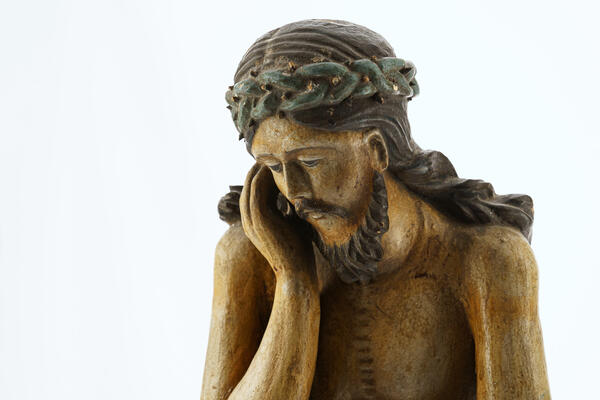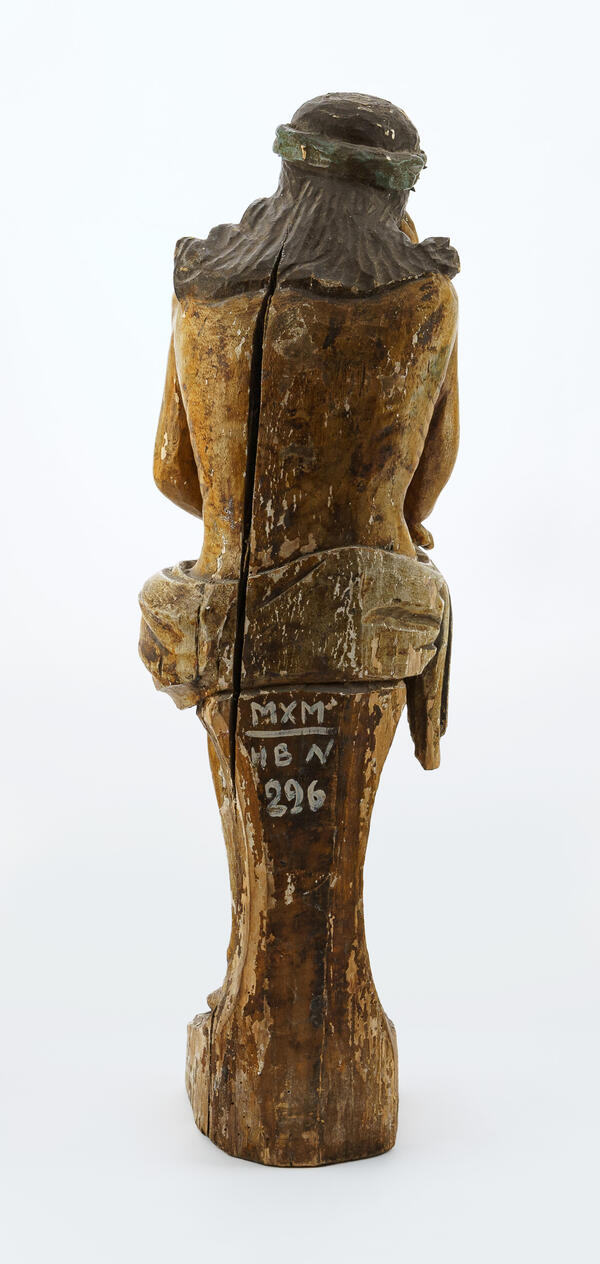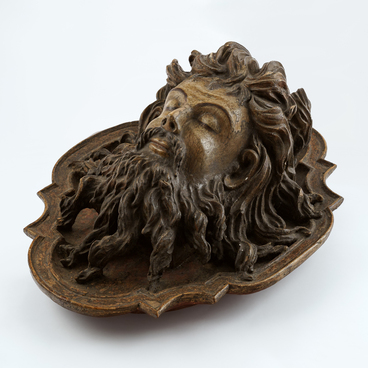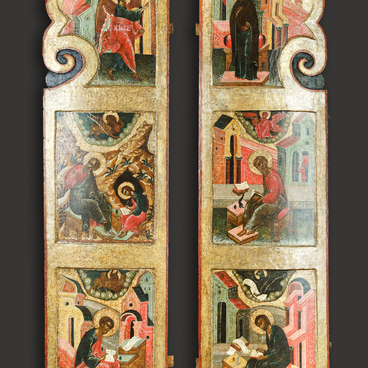As a type of church art, sculpture dates back to early Christian times. It was distinguished by a variety of materials and forms. Church sculpture includes altar barriers, carved iconostases, and crucifixes. Along with traditional carved icons and images, round wooden sculpture became part of iconostases.
The heyday of church wooden sculpture and carved icons in Rus occurred in the late 16th — first half of the 17th century. At that time, relief images beloved by the people were painted with tempera. For the ornamental and sculptural decoration of the interior of Christian churches — relief icons, round sculptures, royal doors and multi-tiered iconostases — the most common types of wood were used, in particular oak, pine, linden, and maple.
In the 18th–19th centuries, the Holy Synod forbade the use of sculptures in churches several times, but on the periphery the prohibitions were not so strict. Wooden sculpture was very popular in Novgorod, Perm, and overall, in the Russian North.
The image of the Sorrowful Savior became very widespread. There were various versions of this image, for instance, “Christ in the Dungeon”, “Christ in the Crown of Thorns”, “Christ Crowned with Thorns”, or “Midnight Savior”. Sculptures of this type usually represented Christ sitting with the crown of thorns on His head and with His right hand on His cheek. Some of the sculptures included bloody smudges on the head of Christ, scars on the body, or shackles on the legs. Often such a statue of Christ was placed in the church in a specially made room or a deep dark niche in the wall. A lamp was lit in front of it.
“Jesus Christ Crowned with Thorns” from the
collection of the Mstyora Art Museum is a wooden image of pensive Jesus Christ
sitting in prison on the eve of His execution. He sits with His head slightly
lowered and His knees touching. His left hand rests on His right hip, and His
right hand is on His cheek. On His head is the crown of thorns — one of the
Instruments of the Passion. The sculpture was created by an unknown master in
the 18th century. The place of creation has not been established.





